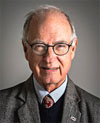 By Donald Kirk
By Donald KirkSEOUL — Americans hardly know how to respond to all those American flags seen in central Seoul on Saturday afternoons and evenings.
Initially, as Korean conservatives began flying the Stars and Stripes at conservative rallies after the impeachment, ouster and jailing of Park Geun-Hye in 2016 and 2017, Americans in Seoul could hardly believe what they were seeing.
Many U.S. citizens remain somewhat amused, even embarrassed, by these displays of pro-American sentiment. On university faculties, American professors mock the flag-wavers, discounting their importance while praising the Candlelight Revolution and the rise of Moon Jae-In as president.
Many others are simply amazed by the passion with which conservatives, including veterans of the Vietnam and Korean wars, venerate the Korean-American alliance and U.S. military support of South Korea against the rising threat of North Korea, armed with nuclear warheads and missiles capable of striking anywhere in the South.
The range of American responses is understandable when one considers the dominant position of the left wing on American campuses. It’s inconceivable that student demonstrators in the U.S. would wave U.S. flags. Professors, most of them inclined to the left, some quite radical, scorn such shows of patriotism. In the U.S., you are more likely to see real patriotism at professional sports events than at universities. Crowds in stadiums across the U.S. sing the national anthem, “The Star-Spangled Banner,” and “God Bless America.”
Otherwise you have to wait until the Fourth of July, the American independence day, to see American flags widely displayed in public. Many Americans would prefer not to observe this national holiday honoring the date in 1776 when the original American patriots, the “founding fathers,” signed the declaration of independence from Great Britain.
It’s against this background that the American media persists in overlooking the importance of outpourings in Seoul of pro-American patriotism.
It’s difficult for correspondents for U.S. or other foreign news organizations to realize that rightist protests in central Seoul may actually represent a powerful political sentiment among millions of South Koreans who are increasingly unhappy with Moon, his government and his policies. The fact that the protesters tend to be above 60 years old contributes to the sense that their Saturday demonstrations are “not news,” that they represent only an extremist position.
You get the impression that many Koreans wish the protests would simply die away. It is difficult for either American or Korean journalists to believe that these protests are getting bigger as disillusionment spreads among voters. The Candlelight Revolution appeared to mark a permanent turning point in Korean political and social life. The fact that the tide is turning is difficult to accept.
The Korean response is is a little more complicated than that of Americans for the obvious reason that the government is able to intimidate the Korean media.
Korean editors may once have believed the protests had little real importance, but their increasing strength makes them difficult to ignore. Seoul’s national newspapers appear quite reluctant to cover them while the government can always threaten to repress any media that appears sympathetic. We hear stories of government pressure not only on television networks but also on the print media.
Leading conservative voices such as Chosun Ilbo are inclined to downplay them for fear of reprisals, if not openly, then subtly.
That’s extremely unfortunate considering that the protests are gaining in importance as North Korea reverts to its usual abusive rhetoric while showing no signs of giving up its nuclear and missile programs.
Koreans as well as Americans find it difficult to believe that young people are showing up at these protests in increasing numbers. They seem to be gaining in strength while foreign journalists do not know what to make of them and the Korean media, under pressure, stays away.
The strong pro-American sentiment among many older Koreans is an important phenomenon. Memories of the Korean War kindle fears of a second Korean War, perhaps far worse than the conflict that raged from June 1950 to July 1953. Rather than sneer at the American flags waving every Saturday, journalists should recognize the need not only to make note of these displays of old-time patriotism but to explain the reasons for it.
It’s one thing for the foreign media not to pay a great deal of attention but quite another for the Korean media to avoid a story right in front of the eyes of all their reporters and editors.
Foreign journalists, particularly those with American news organizations, are focusing elsewhere.
The troubles of President Donald Trump as he faces the possibility of impeachment are the top story in the U.S.
Non-stop protests in Hong Kong are the major foreign story from Asia while Trump’s moves in the middle east, including withdrawal of U.S. troops from northern Syria also dominate the news.
Korea gets attention only when Kim Jong-Un orders another missile test.
Don Kirk has been a Tokyo- and Seoul-based correspondent for decades.
Free Press International


